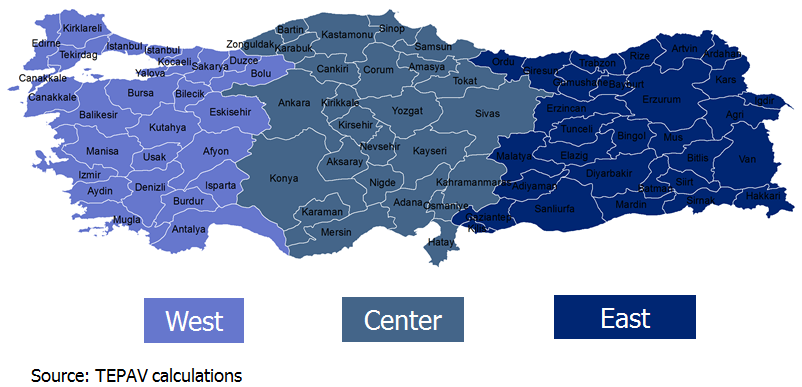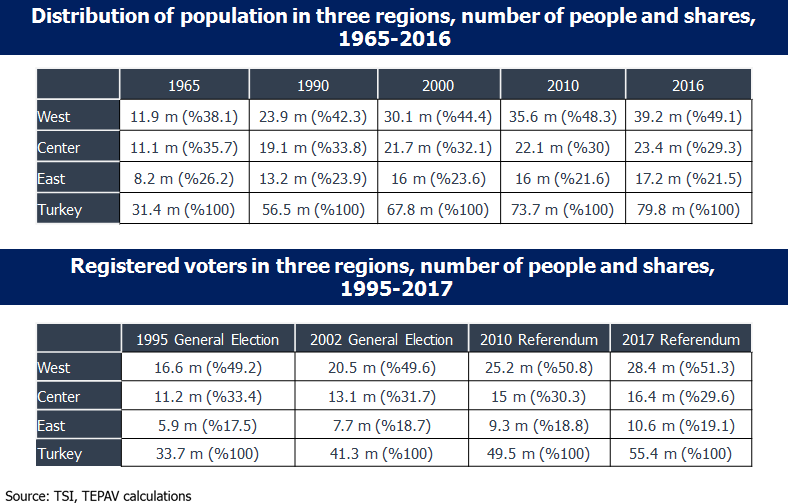Why are all these Japanese people coming to Turkey?

It isn’t easy to be an optimist in Ankara, but I must admit that I am one. Still, even I was surprised the other day when I saw a list of Japanese companies operating in Turkey. The Japanese are known for thinking thoroughly before taking action. Yet the number of Japanese companies in Turkey increased from 62 in 2007 to 188 in 2016.
What is more interesting is the change between 2015 and 2016. In 2015, there were 138 companies. So 2016 saw 50 more Japanese companies setting up in Turkey. Now, 2016 can hardly be considered an exemplary year for political stability, not even according to Turkish standards. So why are all these Japanese people coming to Turkey? This is a country in flux. Maybe that’s what makes it rather interesting for companies. Let me elaborate.
Turkey is on the move. Internal migration is one defining characteristic of the country. People are moving from the countryside to the cities to establish new lives for themselves, adapting to the urban environment rapidly. In the early 1960s, only 30 percent of the population was living in urban areas. Now that number has increased to 75 percent.
The movement is mostly from the east to the west. Just divide Turkey vertically into three more or less equally populated parts according to 1965 census: West, center and east. In 1965, the population of Turkey was around 31 million. In 2016 it has risen to around 80 million, without counting the 3.5 million migrants and refugees currently living here.
So there has been an increase of around 150 percent in 52 years. But we are never going to be 100 million strong, despite President Recep Tayyip Erdoğan’s incessant demands. It’s a matter of changing lifestyles. In 1965, of the 31 million Turks, 38 percent of them were living in the West, 36 percent were in central Turkey, and around 26 percent were in the east. In 2016, of the 80 million Turks, 49 percent are living in western Turkey, 29 percent are in the center, and 21 percent are in the east. (Table 1) The country has shifted westwards.

I see an interesting pattern here. When you move from eastern Turkey to the west, the population increases. Yet female fertility rates also decline along the way. Why? Moving from east to west is a drastic change in lifestyle. Per capita GDP also rises from east to west. As Turks move westwards, they become wealthier, more settled, and have fewer but better-off kids.
In the early 1970s, the average woman in Turkey had around seven children. At the time, that number was just two in Sweden. Turkey just recently caught up with Sweden, with its fertility rate now around 2.1 percent. This is what I call normalization.
Let me make one more comparison before summing up. In the recent referendum, 51.3 percent of voters were from western Turkey, 30 percent from central Turkey, and 19 percent from eastern Turkey. What was the share of “Yes” votes in these three slices? 46.4 percent in the west, 56.1 percent in the center, and 56.9 percent in the east. (Table 2) I have said elsewhere that western Turkey is already effectively part of a union with the EU. That is not necessarily the case in the center and east of the country: The importance of the EU declines when you go from Turkey’s west to its east.

All this makes Turkey a very buoyant opportunity for companies, especially those who can plan for the long term like Japanese firms. There is nothing essentially wrong with Turkey. If we look at the bigger picture, we see that today’s concerns are the growing pains of a great normalization process.
 It isn’t easy to be an optimist in Ankara, but I must admit that I am one. Still, even I was surprised the other day when I saw a list of Japanese companies operating in Turkey. The Japanese are known for thinking thoroughly before taking action. Yet the number of Japanese companies in Turkey increased from 62 in 2007 to 188 in 2016.
It isn’t easy to be an optimist in Ankara, but I must admit that I am one. Still, even I was surprised the other day when I saw a list of Japanese companies operating in Turkey. The Japanese are known for thinking thoroughly before taking action. Yet the number of Japanese companies in Turkey increased from 62 in 2007 to 188 in 2016. 
